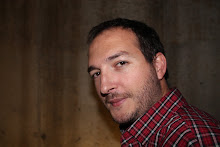“I
was brought up in the suburbs of Reykjavík,” says Björk, sitting in a
small cafe in the heart of the Icelandic capital while the rain skitters
about outside. “I lived next to the last block of flats, and then it
was moss and tundra. I used to walk a lot on my own and sing at the top
of my lungs. I think a lot of Icelandic people do this. You don’t go to
church or a psychotherapist – you go for a walk and feel better.”
Iceland’s most celebrated musician is feeling particularly
impassioned about her homeland: she had just held a press conference to
raise awareness of the threat to the Icelandic highlands,
an area of extraordinary beauty and ecological diversity that may be
irreparably damaged by plans to lay a subsea power cable to the UK,
accompanied by above-ground power stations and infrastructure.
That Björk chose to deliver this message in the middle of Iceland’s
annual Airwaves music festival is significant. While the festival
showcases bands from all over the world, it is also a celebration of
Icelandic creativity, of its music and its literature. To make this
statement at Airwaves was to tether that creativity to the land itself.
Much has been written about how Iceland’s landscape infuses its
music. In the popular narrative it is “epic”, “sweeping” and “volcanic”,
simultaneously hot and cold, and wave-swept, offbeat and outlandish,
carried by a tradition of sagas and fairytales.
But there is unquestionably something distinctive about Icelandic
music – in its structure and shape and spirit of experimentation. You
feel it in Of Monsters and Men’s furious folk and in the extraordinary compositions of Sigur Rós. (As one academic paper noted,
their music “could be said to express sonically both the isolation of
their Icelandic location and to induce a feeling of hermetic isolation
in the listener through the climactic and melodic intensity of their
sound”).
And it’s there in Björk’s own work, notably her 1997 album Homogenic,
which sought to capture in sound the geography of her birthplace. Its
producer, Markus Dravs, recalls her instruction that it should feel like
“rough volcanoes with soft moss growing over it”.
Across the cafe table from Björk sits the writer Andri Snær Magnason,
who is the head of the festival’s literary wing, Airwords, and one of
the country’s leading authors – of novels, plays, children’s literature
and poetry. One of his most fascinating works saw him collaborate with
the Icelandic group Múm, who set his words to music. In 2006, he published Dreamland,
a non-fiction work that took the temperature of modern Iceland, looking
specifically at its environmental crisis and its landscape.
“Those are my favourite mountains,” he says later as we drive out of
Reykjavík. “They always look as if the sun is shining on them.” The
landscape out here is dourly spectacular: the clouds shift over fields
of slate grey and brilliant yellow gorse. We are headed towards the
former home of Iceland’s Nobel prize-winning poet Halldór Laxness.
Crammed into the car with us are Laxness’s granddaughter, Auður
Jónsdóttir, who is also a writer, and her young son, Leif, who has
recently fallen in love with the music of Michael Jackson, and sits in
the back seat, clamouring for music.
“Halldór is the grand poet,” Magnason explains as we stand in Laxness’s home, which is now a museum.
“His light or his shadow is over all of us. He was a tower in
literature.” Laxness, he explains, was of the generation that in effect
created the modern Iceland in the mid 1940s. “All of the institutions we
have now were created then,” adds his son-in-law Halldór Thorgeirsson,
who has joined our little tour. “The music schools, too. Laxness’s
publisher went to London in 1945 to purchase a large number of pianos
and then distributed them around the country.”
When trying to understand the music and literature of Iceland, it is
important to understand the national psychology. “The psyche of Iceland
is about wanting to be acknowledged,” Magnason says. “It isn’t
superior, it wasn’t a Viking mentality, it was to be recognised as on a
par with anything abroad. Björk and her music was the first time we did
something first, that people elsewhere were copying us. And she
has the same mentality as Laxness’s publisher: that if you leave pianos
all around town, eventually they will be played.”
You sense that legacy in the breadth of the Iceland Airwaves
festival’s lineup, from the 20-strong all-female hip-hop outfit
Reykjavíkurdætur to the curious garage-punk of Grísalappalísa and the
electronica of GusGus. It’s even in the music of John Grant, the Colorado native who has made Iceland his home,
and performs two shows with the Icelandic Symphony Orchestra, speaking
to the crowd in a combination of English and Icelandic, evidently
relishing the way the latter rolls off the tongue.

“And he always had the same routine,” she says. “He woke up,
had breakfast at 9am, went upstairs, worked for two or three hours, and
then he would go out walking for hours. Sometimes he didn’t come back
and they had to call the police.” Her grandmother would look for him
through the telescope as he ploughed across the land, distinctive in his
yellow scarf. “We have many gods and obey them all, and they us,” he
once wrote, “the god of the sea and the god of the land, the god of
thunder and the god of poetry.”
Back at the cafe, Björk is talking about her relationship with the
landscape. “When I was a teenager I used to hitchhike,” she recalls,
“and camp, and spend a few days on my own each year. The first money I
got, when I was 13, I used to buy a tent. It was my ideal freedom. And I
don’t think I’m alone in that ideal. There’s a sacredness that comes
with this landscape.”


Comentarios
Publicar un comentario